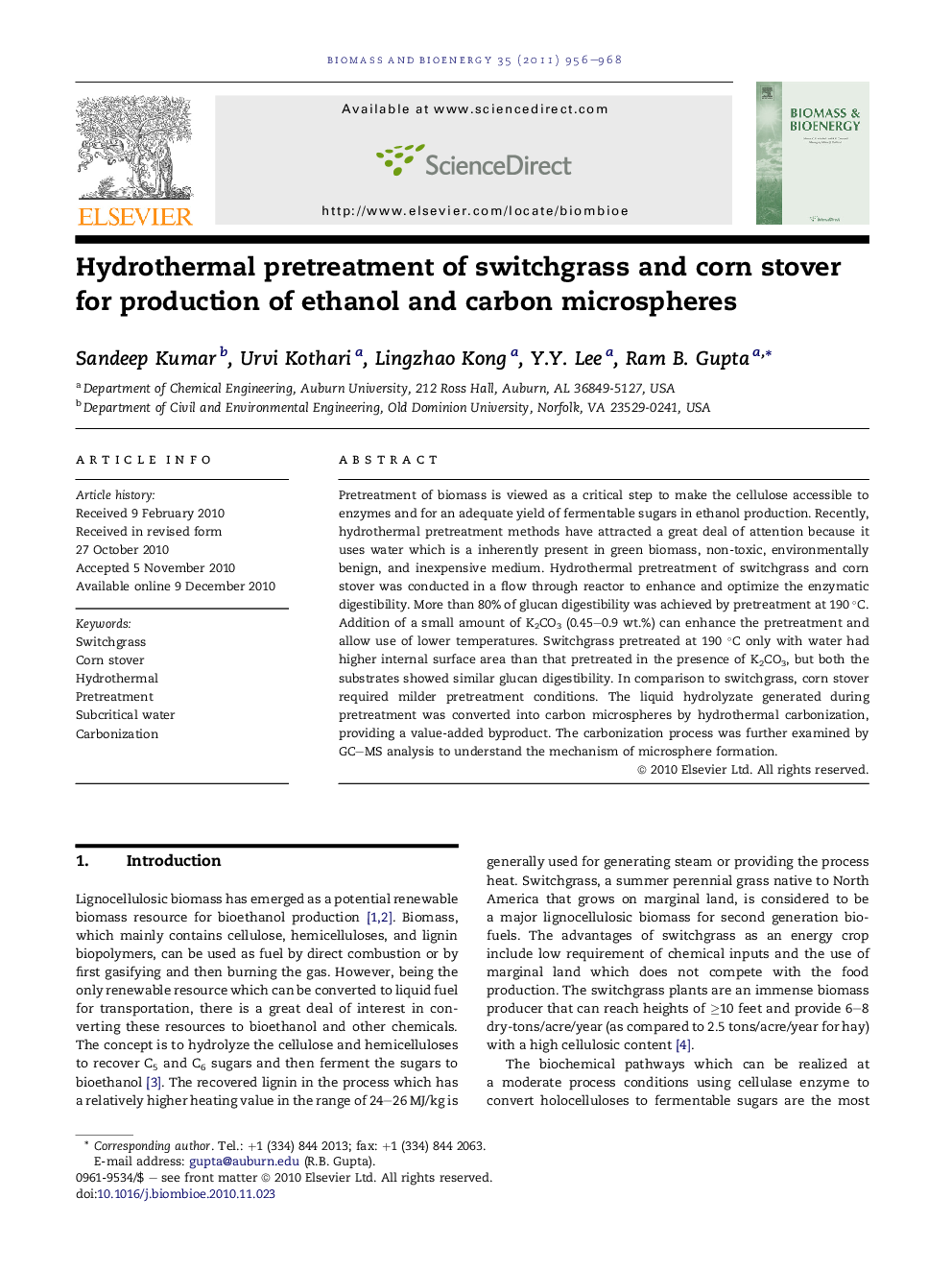| Article ID | Journal | Published Year | Pages | File Type |
|---|---|---|---|---|
| 678156 | Biomass and Bioenergy | 2011 | 13 Pages |
Pretreatment of biomass is viewed as a critical step to make the cellulose accessible to enzymes and for an adequate yield of fermentable sugars in ethanol production. Recently, hydrothermal pretreatment methods have attracted a great deal of attention because it uses water which is a inherently present in green biomass, non-toxic, environmentally benign, and inexpensive medium. Hydrothermal pretreatment of switchgrass and corn stover was conducted in a flow through reactor to enhance and optimize the enzymatic digestibility. More than 80% of glucan digestibility was achieved by pretreatment at 190 °C. Addition of a small amount of K2CO3 (0.45–0.9 wt.%) can enhance the pretreatment and allow use of lower temperatures. Switchgrass pretreated at 190 °C only with water had higher internal surface area than that pretreated in the presence of K2CO3, but both the substrates showed similar glucan digestibility. In comparison to switchgrass, corn stover required milder pretreatment conditions. The liquid hydrolyzate generated during pretreatment was converted into carbon microspheres by hydrothermal carbonization, providing a value-added byproduct. The carbonization process was further examined by GC–MS analysis to understand the mechanism of microsphere formation.
